AGRONOMICSUPPORT
YOU CAN TAKETO THE FIELD
Soybean Gall Midge: What We Know
The Soybean Gall Midge is a newly discovered pest that researchers are quickly trying to understand and entomologists in the ag industry are trying to find ways to manage. This article will discuss what we know today, as this pest continues to spread and cause increased yield damage to soybean fields in the western Corn Belt.
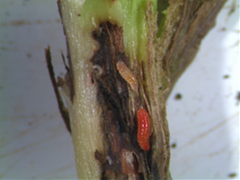 The Pest:
The Pest:
The species is Resseliella maxima (Gagne’). There are 55 species worldwide but only 15 in the United States and this is the first documented species to effect soybeans. The species comes from the same family as the Hessian Fly and wheat midge family. Although documented in 2011 and 2015, researchers thought the eggs being laid and the damage caused was a result of hail early in the year that attracted adult midges to lay offspring. It wasn’t until 2018 that researchers learned that this was an increasing issue and with grant funding developed a research plan for 2019 growing season.
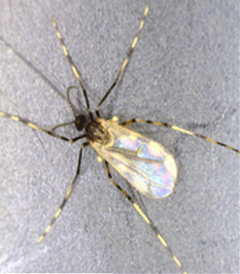 Identification and life cycle:
Identification and life cycle:
The adult soybean gall midge is about ¼ inch long, with black and white banding on legs and reddish abdomen. The overwintering pupa emerge from previous year soybean fields around June. Shortly after emergence (nine days), eggs are laid inside the base of the plant stem. Eggs hatch and larvae feed for three instars (12 days). The larvae are maggot-like larvae that are clear to white initially and then turn to orange as they mature. Larvae then pupate and the metamorphosis cycle starts again. Researchers believe that there are between two to three generations currently, each generation taking approximately 28-32 days to complete. However, additional research is needed to confirm this.
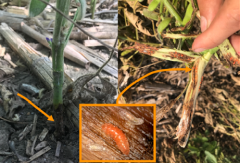 Scouting:
Scouting:
Areas and/or conditions that seem to promote infestations are:
- Previous year soybeans
- Areas next to dense vegetation
- Areas of good moisture
- Early planted soybean fields; Field edges (50-200ft).
When scouting, look for dark discoloration at the base of the plant. If discoloration is present, conduct a push test and usually the stem will snap, sometimes even if the plant appears healthy in the upper canopy. Split the stem and you will likely find larvae present.
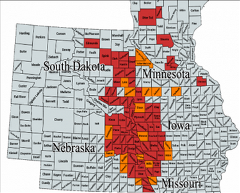 Yield Effects:
Yield Effects:
Field edges are where the most severe yield loss takes place and it usually doesn’t spread throughout the entire field. Severe infestations have reported 100% yield loss, which has been up to 200 feet in from the edge. Other reports showed 20% loss more than 200 feet in from field edges. Overall, the number of counties that have reported infestations have continued to grow over the last two years. The map shows counties where the pest has been documented.
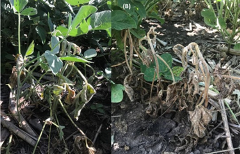 Management:
Management:
Unfortunately, there is no clear management strategy to effectively control soybean gall midge. Timing of the emerging adults and placement of the eggs inside the plant make controlling the pest extremely difficult at this present time. Additional research is being conducted in order to fully understand the pest life cycle and hopefully further understanding will help in management strategies.
Methods currently being tested for control are insecticide applications, cultural control and delayed planting. As of now, crop rotation has proved to be the best option. As research continues, there is hope of options for better economic control. If you have questions regarding soybean gall midge, please contact your LG seeds Technical Team Agronomist.
Download a copy of this technical bulletin here: Soybean Gall Midge: What We Know
Resources and additional information:
- McMechan, J., Hunt, T. and Wright, R. (2019). Mid-Season Update on Soybean Gall Midge. [online] CropWatch. Available at: https://cropwatch.unl.edu/2019/mid-season-update-soybean-gall-midge
- McMechan, J., Hunt, T. and Wright, R. (2018). Soybean Gall Midge: Adult Stage Identified. [online] CropWatch. Available at: https://cropwatch.unl.edu/2018/soybean-gall-midge-adult-stage-identified




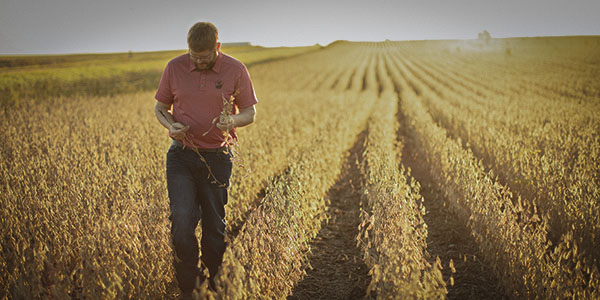

Technical Team Agronomist